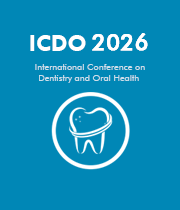Title: Service evaluation of mandibular third molar coronectomy
Abstract:
Objectives: Coronectomy is an alternative treatment to extraction when managing non carious mandibular third molar teeth, which are in close proximity to the Inferior Alveolar Nerve (IDN). The procedure is considered a risk-reducing strategy to prevent temporary or permanent neurosensory deficit associated with IDN injury. We conducted a service evaluation investigating current practice of managing patients undergoing coronectomies in a teaching hospital setting, with the aim to streamline practice and reduce unwarranted variation.
Methods: 58 coronectomy procedures, carried out under all anaesthetic modalities, were assessed retrospectively between January 2022 - January 2024. Data on preoperative assessment, surgical intervention and post-operative sequalae were investigated. Factors including clinician grade and pre-operative factors, such as antibiotic prophylaxis and radiographic findings, were included in the data analysis. Treatment failure was defined through the consideration of both symptomatic clinical and radiographic findings necessitating the need for follow up surgical intervention.
Outcomes: 75.5% of patients had a single post operative OPG, with 10% of these undergoing multiple radiographic reviews in the post-operative period. Results included the following coronectomy complications: failure rate (6.9%), infection (3.5%), persistent pain (22.4%) and root migration (34.8%). No cases of neurosensory deficit. Findings were presented locally and informed the creation of a departmental proforma for selection criteria for coronectomy and in the assessment of post operative complications.
Conclusions: Pertinent clinical and radiographic signs in coronectomy failure included persistent pain, retained enamel, supracrestal root positioning and incomplete mucosal coverage. The potential for subjectivity and over-interpretation of radiographic findings, including post operative root migration, highlights the importance of correlating radiographic and clinical findings with patient symptomatology when defining failure. Clear parameters for assessment when diagnosing a failed coronectomy procedure are essential to inform further intervention and associated risks. The authors recommend services carrying out coronectomy to evaluate their current practice to ensure high quality of care.




